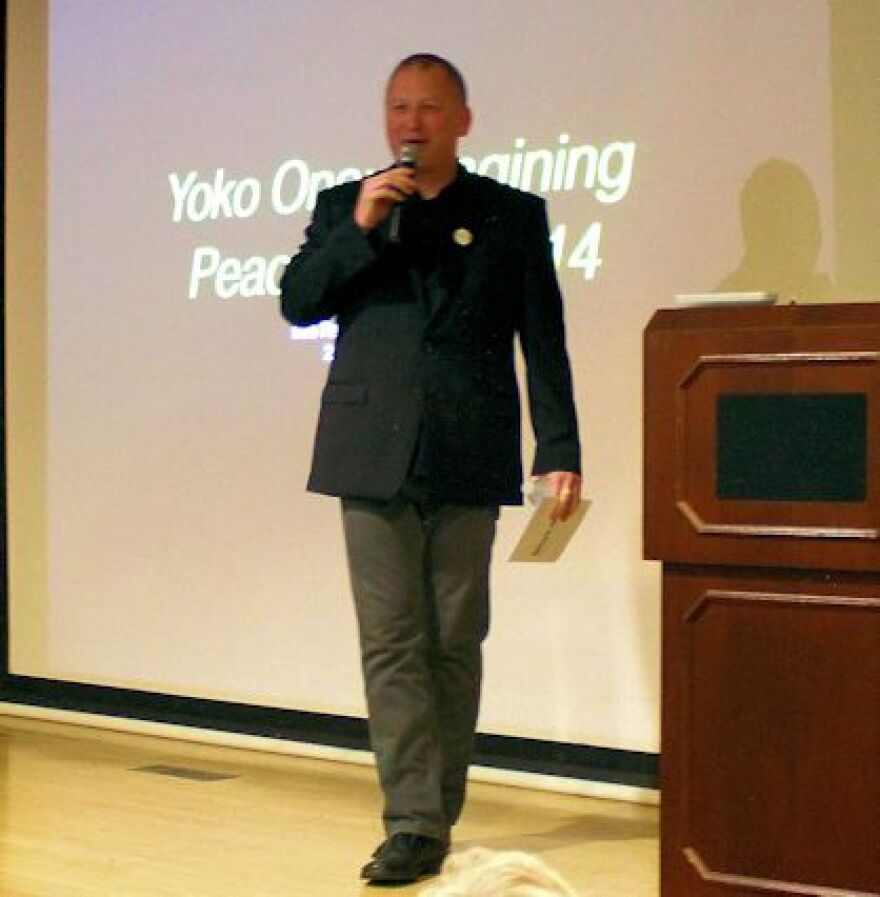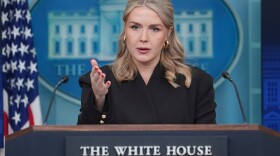When he returned from China in 1985, Bob Rauschenberg stopped at the Mucky Duck on Captiva to watch the sun set. The owner, Victor, handed him a letter that had been mailed to the artist in care of the pub. It turned out to be a fan letter from a young man named Jade Dellinger.
“Knowing that if I sent it to the Leo Castelli Gallery in New York, or even had I gotten his address on Captiva, there would be gatekeepers, I wrote to Mr. Robert Rauschenberg, care of the Mucky Duck Pub,” Dellinger explained.
Dellinger knew a thing or two about fan letters. His grandfather was MLB Hall of Famer Eddie Rausch, and Dellinger spent many a weekend helping his granddad answer fan mail.
“I was 13, 14, 15 years old,” Dellinger continued. “Having grown up around baseball, knowing Mickey Mantle and Joe DiMaggio and Ted Williams and Yogi Berra, they were all big fans of his because … he was the oldest living person in the Baseball Hall of Fame at the time. But it didn't interest me. I got interested in art.”
Dellinger had read a magazine article that mentioned how Rauschenberg often enjoyed a drink at sunset at the Mucky Duck. That gave Dellinger an idea.
“I ended the letter with a PS: Enclosed is $10. Let me buy you a drink,” Dellinger added.
A week and half later came a knock on the door.
“My parents answer, call for me, I have to sign for some big package that has arrived,” said Dellinger. “It's a large tube, it's canceled, Captiva Island. In it was this lithographic poster.
It was a new lithograph Rauschenberg had made at Graphicstudio for the exhibitions in China as part of his Rauschenberg Overseas Cultural Interchange. Rauschenberg had personalized it.
“That was signed, ‘For Jade from Bob Rauschenberg,’ and a handwritten note that said, ‘I'll have that drink and wish you luck just before I go to work tonight. I put a gift in your pocket. Best RR.,’” Dellinger said.
Dellinger never met Rauschenberg in person.
“I was in the same room with him a couple of times, but then as a high school kid or a college kid rather, I was always too intimidated,” Dellinger said.
When the director position for the Bob Rauschenberg Gallery at Florida SouthWestern came open, Dellinger jumped at it. Since 2013, Dellinger has curated numerous exhibits that perpetuate and expand Rauschenberg’s legacy.
And that poster that Rauschenberg gave him?
It hangs on the wall over his desk to remind him of his special connection to the gallery’s namesake.
“Being director of the Bob Rauschenberg Gallery is not only a huge honor, it is kind of full circle,” Dellinger noted. “And the first thing that I did when I got here was I put [that poster] on the wall over my desk.”

MORE INFORMATION:
Dellinger’s grandfather, Eddie Rausch, played for the Cincinnati Reds. He batted .323 over 18 years while impressing fans with his acrobatic catches in center field.
“He carried the heaviest bat ever in the history of baseball to this day,” Dellinger pointed out.
Rausch was inducted into the Baseball Hall of Fame in 1962 with Jackie Robinson.
Although he remained in good physical condition well into his golden years, Rausch suffered from cataracts that made it difficult for him to read, especially cursive penmanship.
“So as a teenager, I would help him answer his fan mail, and he would get dozens of letters every week asking him for all kinds of things, to complete questionnaires about his playing days, autographs, etc.,” Dellinger recalled. “And so, it became my responsibility to read the letters to him. Then he would sign autographs, and I'd put the packages together and get them to the post office.”
Although Dellinger preferred art over baseball, he wasn’t a Rauschenberg fan until he read a magazine article that described a typical day in the artist’s life.
“The writer had spent a day shadowing Rauschenberg.” Dellinger said. “The writer said he would sleep in, getting up into the afternoon, spend a little time on the beach while preparations were being made in the studio and then would walk down the beach to a bar, which was mentioned in this article, where he often would watch the sunset and sort of celebrate the setting of the sun. Then he'd go to work all night. Well, in reading the article, I was so moved by his story and his connection that I thought, I'm going to write him a fan letter.”

The Mucky Duck
The Mucky Duck traces its lineage to a tea house known as The Gulf View Inn. Due to beach erosion, the inn had to be moved back some 300 feet from its location near the breakers. Eventually, the inn closed and the property was converted into a beach house.
In 1975, two entrepreneurs purchased the beach house as a rental property. During the title transfer, they discovered the old inn’s expired beer and wine license could be reactivated for $100. They decided to transform the beach house into a beachside pub.
They gave the pub the name of “Mucky Duck.” It’s British in origin. In England, drinking establishments commonly bear names such as “The Black Swan,” “The White Swan,” “The Dirty Duck” and “The Mucky Duck.” So, on Jan. 29, 1976, the old Gulf View Inn on Captiva Island was reborn as The Mucky Duck.
In 1980, Swiss restaurateur Andreas Bieri purchased an interest in The Mucky Duck and was its head chef and manager prior to taking on other business endeavors. Between 2011 and 2016, he bought out the other partners.

Although it escaped serious damage from Hurricane Ian, the restaurant and pub’s luck ran out on Oct. 9, 2024, when it was destroyed by Hurricane Milton. Storm surge breached the windows and wooden walls, flooding the interior of the building. Bieri elected to rebuild, retaining the original design and footprint of the original inn and beach house.
“This had to come back,” Bieri told journalist David Dorsey earlier this month. “I’m so glad we had what we had, a historic building, which gave us more possibilities and easier permitting.”
The Mucky Duck is on schedule to reopen by the end of the year – in time not only for tourist season, but also the restaurant and pub’s 50th anniversary in 2026.
Dellinger was advancing Rauschenberg’s legacy even before he became the gallery’s director
Dellinger became director of the Bob Rauschenberg Gallery on Sept. 16, 2013. But even before assuming the directorship, he had ties to the Bob Rauschenberg Gallery.
In 2012, he curated “Things Not Seen Before: A Tribute to John Cage” at the Bob Rauschenberg Gallery. Cage and Rauschenberg were Black Mountain College alumni and became close friends after Rauschenberg moved into a rented loft on Pearl Street in lower Manhattan, where he embarked upon a six-year professional and personal relationship with Jasper Johns. The Cage retrospective at the Bob Rauschenberg Gallery was the outgrowth of a Cage tribute that Dellinger arranged at Tempus Projects in Tampa and “John CAGE’s 33-1/3- Performed by Audience” at the Tampa Museum of Art, in which vinyl albums for the interactive record installation were selected by, among others, Jim Rosenquist, Ed Ruscha, Yoko Ono, David Byrne, Iggy Pop and Graham Nash.

Dellinger took the Cage exhibit on the road to Tbilisi, Georgia. For that project, Dellinger received a 2013 Fulbright-Hays Scholarship from the U.S. Department of State, but the exhibit was by no means the only item on Dellinger’s crowded ”to do” list. For the previous two years, he’d also been absorbed by a Graphicstudio retrospective that opened at the Tampa Museum of Art in January of 2014.
Titled “USF Graphicstudio: UnCommon Practice,” the retrospective was the largest exhibit in the history of Tampa Bay, taking up 90 percent of the Tampa Museum’s traveling show facilities. A major Graphicstudio retrospective had not been done in more than two decades, and it was a testament to Dellinger’s acumen and accomplishments that he was asked to curate the exhibition.
For Dellinger, it was another full circle opportunity. “In 1989-90, I was doing research on Graphicstudio as an undergraduate,” Dellinger noted, “which entailed interviewing a number of artists who’d had projects there.”
Dellinger’s research was compiled during a critical moment for Graphicstudio. In 1990, an archive of Graphicstudio’s publications was established at the National Gallery of Art in Washington, which presented a comprehensive exhibition with an accompanying catalog. “Quotes from my interviews ended up being included in the catalog, and that obviously factored into Dellinger being asked to do the Graphicstudio retrospective in January.

The Poster
The lithograph that Rauschenberg sent Dellinger was from the R.O.C.I. exhibition at the National Gallery in Beijing.

Support for WGCU’s arts & culture reporting comes from the Estate of Myra Janco Daniels, the Charles M. and Joan R. Taylor Foundation, and Naomi Bloom in loving memory of her husband, Ron Wallace.







